Simple Texas Hold’em Odds for Winning Players
Was that Texas Hold’em poker hand you just lost actually a bad beat, or did you just make a bad decision based on the odds?
Is that mediocre hand you can’t resist a favorite against what your opponents typically play? Was your winning hand actually a good play for the pot odds you got, or did you just get lucky?
You can answer all of these questions by reviewing the essential odds of making various hands in Texas Hold’em.
Table of Contents
- Poker Odds You Should Memorize
- How do you figure out pot odds in poker?
- What are poker outs?
- Poker odds chart
- Why do you need to know poker odds?
- Figuring out correct Hold’em poker odds without much math
- Preflop Texas Hold’em Odds
- Odds of connecting with the Flop in Hold’em
- Odds On the Flop in Texas Hold’em
- Odds of hitting a hand by the river from the flop
- All-in One-on-One in Texas Hold’em
- Just-for-Fun Texas Hold’em odds
- More on Hold’em odds
- More Hold’em odds references
Poker Odds You Should Memorize
True to my word, I only think you need to know basic math to make “correct” plays in poker. However, there are a few odds that come up often at the poker table that I recommend you memorize.
Knowing these odds helps you most on the flop with a draw or with a made hand which you want to protect against an opponent with a draw.
| Outs | Your Hand | Drawing To | Odds to Hit on the Turn | Odds to Hit by the River |
|---|---|---|---|---|
| 4 | Inside (Gutshot) Straight | Straight | 11:1 | 5:1 |
| 8 | Open-Ended Straight | Straight | 5:1 | 2:1 |
| 9 | Four to a Flush | Flush | 4:1 | 2:1 |
| 15 | Straight + Flush Draw | Straight or Flush | 2:1 | 1:1 |
Note that these odds are rounded to the nearest whole number to make it easier for you to memorize. For more specific odds, check the full odds chart a couple of sections below.
Even though the 15 out hand situation sounds rare, you’ll actually run into it fairly often when playing powerful suited hands like A♥K♥ or A♣Q♣.
I want you to keep in mind how strong of a drawing hand this is when you get it. You end up with 9 outs for the flush draw and 6 more for the straight. It’s only 6 instead of 8 because 2 of those outs were used for the flush. In poker odds, you don’t count outs twice if you can make multiple hands.
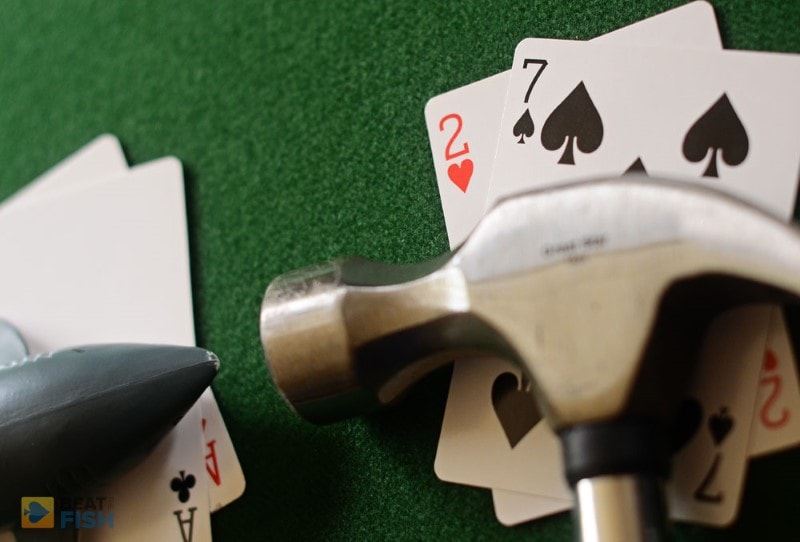
How do you figure out pot odds in poker?
Pot odds in poker simply means the “price” that it costs you to continue with your hand.
For example, if you’re in a hand where the pot is $100 and your opponent bets $50, you’re getting 3 to 1 pot odds to call. The pot is $150 (the $100 that’s already there plus the $50 bet) and it costs $50 to continue. Divide the total pot amount $150 by $50 to get 3.
You say that number “to 1” and those are your pot odds. Understanding pot odds is an essential poker concept because you should always compare the odds of making a drawing hand against the pot odds you’re actually receiving.
What are poker outs?
Poker “outs” are cards to come that will improve your hand.
For example, if you have a Flush Draw on the flop, you have 9 outs to complete. There are 13 cards in each suit minus the 4 you already know about (your 2 hole cards plus 2 on the flop of the same suit).
Another example is 8 outs for an Open-Ended Straight Draw (4 of each card above and below your draw that will complete the Straight). In this case, there would be 1 out for a Set to turn into Four of a Kind because there’s just one more of that card value left in the deck.

Poker odds chart
The following chart will show you the odds to improve your hand based on how many outs you have. I’ve also included the percentages.
If you want to see the detailed math involved with these odds as well as odds for almost any Hold’em situation you can imagine, PokerDope has an excellent page on that.
First, figure out how many outs you have and then if you’re on the flop, turn, or want to know the odds from the flop all the way to the river. I’ve bolded what I think are the most common situations where knowing the odds can help you make a correct call.
Note that the odds are slightly better going from the turn to the river than the flop to the turn because there’s one fewer unknown card left in the deck.
| # of Outs | Flop to Turn Odds | Turn to River Odds | Flop to River Odds | Typical Hand Scenario(s) |
|---|---|---|---|---|
| 1 | 46:1 (2.1%) | 45:1 (2.2%) | 22.3:1 (4.3%) | Smaller Set against a Higher Set, Set to Four of a Kind |
| 2 | 22.5:1 (4.3%) | 22:1 (4.3%) | 10.9:1 (8.4%) | Pocket Pair to Set, Open-Ended Straight Flush Draw |
| 3 | 14.7:1 (6.4%) | 14.3:1 (6.5%) | 7:1 (12.5%) | One Overcard |
| 4 | 10.8:1 (8.5%) | 10.5:1 (8.7%) | 5.1:1 (16.5%) | Inside (Gutshot) Straight Draw, Two Pair to a Full House |
| 5 | 8.4:1 (10.6%) | 8.2:1 (10.9%) | 3.9:1 (20.3%) | Smaller Pair against a Higher Pair, One Pair to Two Pair or Trips |
| 6 | 6.8:1 (12.8%) | 6.7:1 (13%) | 3.1:1 (24.1%) | Two Overcards, No Pair to Pair |
| 7 | 5.7:1 (14.9%) | 5.6:1 (15.2%) | 2.6:1 (27.8%) | Inside (Gutshot) Straight Draw, Set to Full Hour or Four of a Kind |
| 8 | 4.9:1 (17%) | 4.8:1 (17.4%) | 2.2:1 (31.5%) | Open-Ended Straight Draw |
| 9 | 4.2:1 (19.1%) | 4.1:1 (19.6%) | 1.9:1 (35%) | Flush Draw |
| 10 | 3.7:1 (21.3%) | 3.6:1 (21.7%) | 1.6:1 (38.4%) | Inside (Gutshot) Straight Draw and Two Overcards |
| 11 | 3.3:1 (23.4%) | 3.2:1 (23.9%) | 1.4:1 (41.7%) | |
| 12 | 2.9:1 (25.5%) | 2.8:1 (26.1%) | 1.2:1 (45%) | Inside (Gutshot) Straight Draw and Flush Draw |
| 13 | 2.6:1 (27.7%) | 2.5:1 (28.3%) | 1.1:1 (48.1%) | |
| 14 | 2.4:1 (29.8%) | 2.3:1 (30.4%) | 1:1 (51.2%) | |
| 15 | 2.1:1 (31.9%) | 2.1:1 (32.6%) | 0.9:1 (54.1%) | Open-Ended Straight and Flush Draw, Flush Draw with Two Overcards |
Use the 2 and 4 “Hack” when you forget the odds
What happens if you’re in the middle of a hand and you forget the odds to improve your hand? With the rule of 2 and 4, you’re still good as long as you can figure out your outs.
How does it work? To see the percentage of your hand improving by the next card, you simply multiply your outs by 2. If you’re on the flop and want to know how you’ll fare by the river, multiply your outs by 4.
Note that you won’t get the exactly correct poker odds using this shortcut, but it’s close enough to make a good decision.
Let’s look at a couple examples to see how this works.
If you’re on the flop and have a flush draw, you have 9 outs. How do you know that? Take the 13 poker cards of that suit and subtract the 2 in your hand and the 2 on the flop.
That leaves 9. Multiplying that by 2 gives you 18, or around an 18% chance to complete your flush on the turn. Multiplying it by 4 gets you a 36% to complete it by the river.
The actual percentage odds for a flush draw hitting on the turn and then by the river are 19.1% and 35% respectively, getting you pretty close with the 2 and 4 hack.
This system works well in any situation with any number of outs.
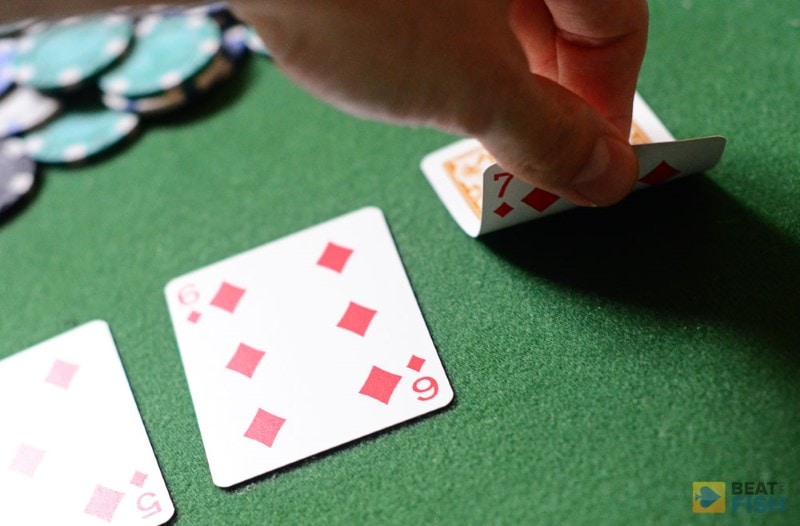
If you have an inside (or gutshot) straight draw, you have 4 outs because you need just one specific card value and there are 4 of each card value in the deck. Double that to get an 8% chance to hit the straight on the turn and multiply it by 4 to get a 16% chance to hit it by the river.
The actual chances of hitting an inside straight on the turn and then by the river are 8.5% and 16.5% respectively. Pretty darn close.
Just remember this at the table: double your outs for your chance of hitting on the turn and multiply by 4 to see how often you’ll hit by the river.
Why do you need to know poker odds?
Besides reviewing your poker play later to see if you made the correct play based on the actual odds, you should memorize the most important odds for use while you play.
If you have a drawing hand, such as a flush or straight draw, you’ll want to make sure you’re getting the correct price on your bet or call compared to the odds of making your hand.
You should be armed with the ability to calculate the most common scenarios in your head during a hand.
I’m a firm believer that you can still be a successful poker player without knowing the odds for every single type of situation at the table, but you should memorize the most common situations on the flop:
- Open-ended straight draws
- Flush draws
- Hitting on your overcards to the flop
- Hitting a set on the flop with your pocket pair
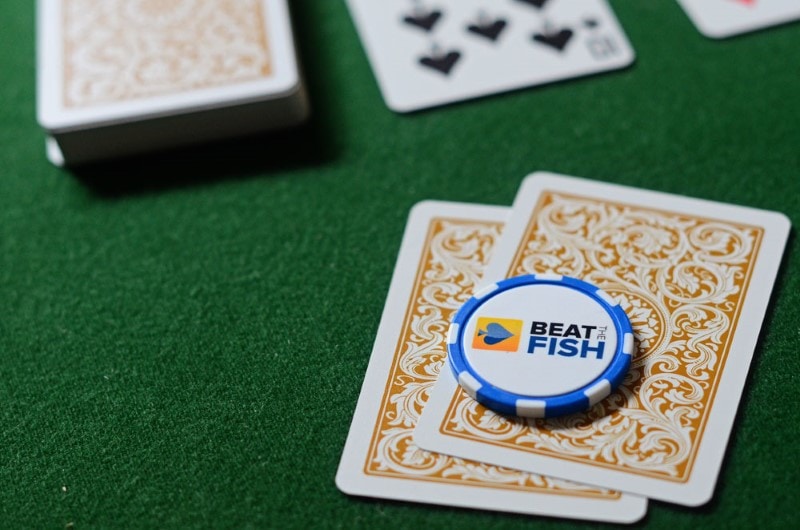
Figuring out correct Hold’em poker odds without much math
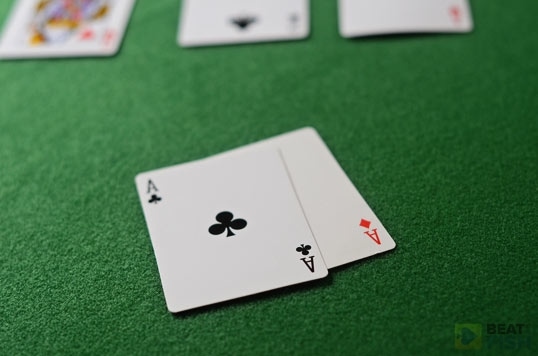
Contrary to what some poker strategists preach, you don’t need to memorize a long list of odds and perform complex mathematics to be a winning Texas Hold’em player.
However, there are some simple Texas Hold’em odds and probabilities that you should know well when you’re drawing to a hand or want to prevent your opponents from doing so.
Here’s the bottom line:
If you figure that your draw will be the best hand if you hit it, just compare the odds of you hitting that hand to the odds the pot is giving you to decide if you’re making a mathematically sound play.
You will run into this situation often at the table, either offline or playing at online poker sites, so get into the habit of comparing the actual odds of making your hand against the pot odds you’re receiving.
The odds below are separated into pre-flop and post-flop sections and, while some are essential, some were thrown in for fun.
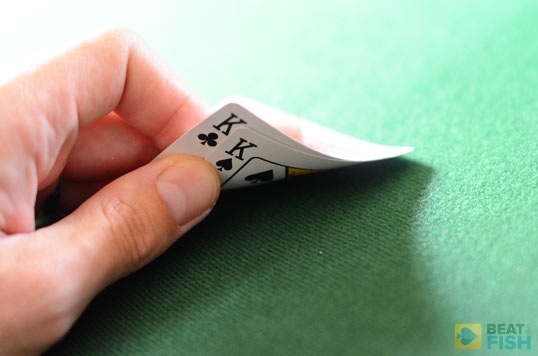
Preflop Texas Hold’em Odds
Bold text = most common playing decisions and thus most important to commit to memory.
If I recommend that you memorize a vital statistic it will be bolded and you will run into it frequently playing Texas Hold ’em. In parenthesis, the probability will be expressed in percentages to the nearest tenth.
These odds won’t really affect your game strategy, but I want it to give you perspective on how rare certain premium cards are.
At the same time, realize that many poker players overvalue random cards of the same suits, which are dealt relatively frequently. However, the odds that these poker hands will improve are much less.
Probability of being dealt:
- Any pocket pair: 16 to 1 (5.9%)
- Two suited cards: 3.25 to 1 (23.5%)
- A-K (Big slick – suited or offsuit): 81.9 to 1 (0.9%)
- Any single ace: 5.7 to 1 (15%)
- Pocket Aces: 220 to 1 (0.5%)
- Pocket Aces or Kings: 110 to 1 (1%)
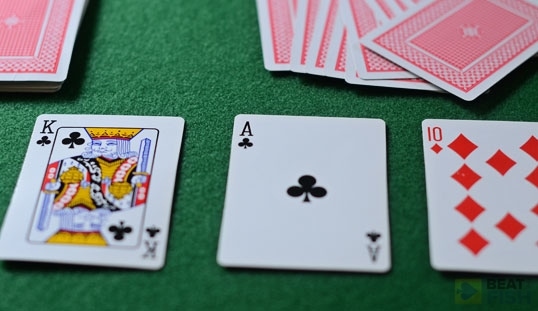
Odds of connecting with the Flop in Hold’em
This is where true strategy and comparing pot odds to the actual odds of hitting a better hand come into play. I’ve listed the most essential common situations of what you’re looking to hit on the flop.
It’s a wise idea to try to commit the approximate values to memory so you can quickly make pre-flop decisions at the table.
- Hitting another kind of your pocket pair (making a set): 7.5 to 1 (11.8%)
- You will pair at least one of your unpaired hole cards: 2.1 to 1 (32.4%)
- Hitting two or more of your suit when you hold suited cards: 7.5 to 1 (11.8%)
- Hitting a flush on the flop with suited hole cards: 118 to 1 (0.8%)
- You will hit two pair on the flop with unpaired hole cards: 49 to 1 (2%)
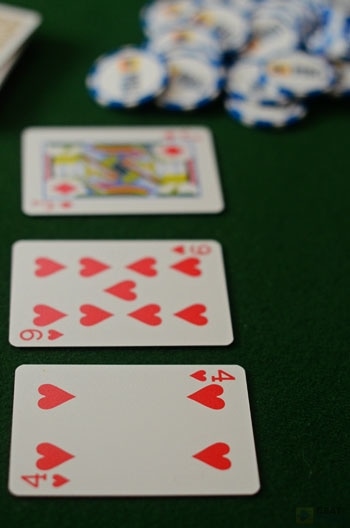
Odds On the Flop in Texas Hold’em
The flop is the turning point of a Hold’em hand. This is where you’re going to make your biggest and most expensive decisions. Knowing the odds of improving your hand after the flop is one of the most important things to remember in Hold’em.
These Hold’em odds, combined with the reading of your opponent(s), will entirely shape whether you continue with a drawing hand or how you make it an incorrect play for your opponent(s) to draw out on your made hand.
You’ll especially want to protect against this at looser online poker sites like Ignition Poker.
Outs
This is especially where “outs” come into your line of thinking and how all of these Texas Hold-em poker odds are generated. For example, if you have 4 cards to a flush you have 9 outs to make your hand on the turn. There are 13 cards per suit and you have 4 of them.
There are 9 unknown cards left that could complete your flush so you have 9 outs out of 47 total unknown cards (52 cards in the deck – your 2 cards and – 3 more on the flop). This is how Texas Hold’em odds are calculated. Rounded to the nearest tenth of a percent, 9/47 = 19.1, or a 19.1% chance to hit your flush on the turn.
Straight and Flush Draw Odds
Drawing to open-ended straights and flushes, or fear of your opponents doing so, is one of the most common scenarios in Hold’em. Again, compare the following odds to the pot odds you’re receiving in order to calculate if it is correct to continue your draw.
On the flop, when you have:
- Four cards to a flush, you will complete it on the turn: 4.2 to 1 (19.1%)
- An open-ended straight, you will complete it on the turn: 4.9 to 1 (17.9%)
- A set, you will complete a Full House or Four of a Kind on the turn: 5.7 to 1 (14.9%)
- Two pair, you will complete a Full House on the turn: 10.8 to 1 (8.5%)
Odds of hitting a hand by the river from the flop
The following set of odds is the likelihood to complete these hands by the river on the flop, so with 2 cards to come on the board.
On the flop, when you have:
- Four cards to a flush, you will complete it by the river: 1.9 to 1 (35%)
- An open-ended straight, you will complete it by the river: 2.2 to 1 (32%)
- An inside (gutshot) straight draw, you will complete it by the river: 5.1 to 1 (17%)
- Two pairs, you will complete at least a Full House by the river: 5 to 1 (17.7%)
- Three of a kind, you will complete at least a Full House by the river: 2 to 1 (33.4%)
- One pair, you will complete at least three of a kind by the river: 10.9 to 1 (8.4%)
- An open-ended straight flush draw, you will complete at least a straight by the river: 0.9 to 1 (54.1%)
- An open-ended straight flush draw, you will complete it by the river: 10.9 to 1 (8.4%)
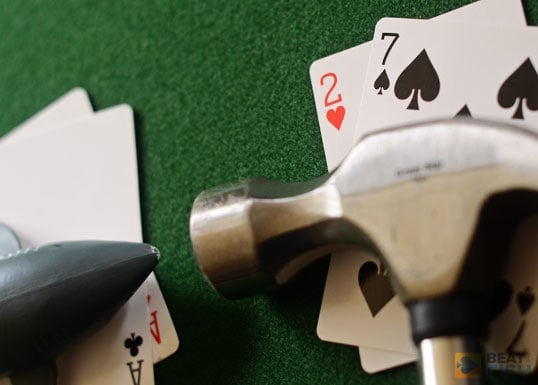
All-in One-on-One in Texas Hold’em
This comes up most often in tournaments when only two players are involved and one of them is all-in. When all of your money goes in preflop against one opponent no further decisions need to be made and the cards will be dealt to the river to determine a winner.
Preflop matchups when played to showdown:
- Larger pocket pair vs. smaller pocket pair (AA vs. KK): Larger pair is at least an 80% favorite
- Pocket Aces vs. unpaired cards (AA vs. KQ): Pocket Aces are at least an 80% favorite
- Pocket Pair vs. overcards (QQ vs. AK): Pocket pair is at least a 52% favorite (commonly referred to as a coin flip)
- Pocket Pair vs. one overcard (JJ vs. A10): Pocket pair is at least a 66% favorite
- Overcards vs. Undercards (AK vs. Q10): Overcards are at least a 57% favorite
- One overcard (A3 vs. J10): Overcard is at least a 50% favorite
- Better kicker (AK vs. AJ): Better kicker is at least a 70% favorite
Just-for-Fun Texas Hold’em odds
These statistics probably won’t affect your game in the slightest, but it’s interesting to know what some of the extreme odds are in Hold’em.
- If you’re holding a pair, the flop will bring you four of a kind about 1 in 119 tries, or 0.84% of the time.
- The odds are 70.5 to 1 (1.4%) that no one at the table has an Ace or a King at a 10-handed table.
- The odds are 87,897 to 1 (0.01%) that you will not be dealt an Ace or a pair for 50 hands.
- You will be dealt pocket Aces four consecutive times 1 in 2,385,443,281 times. Expressed as a percentage, it will happen 0.00000004% of the time.
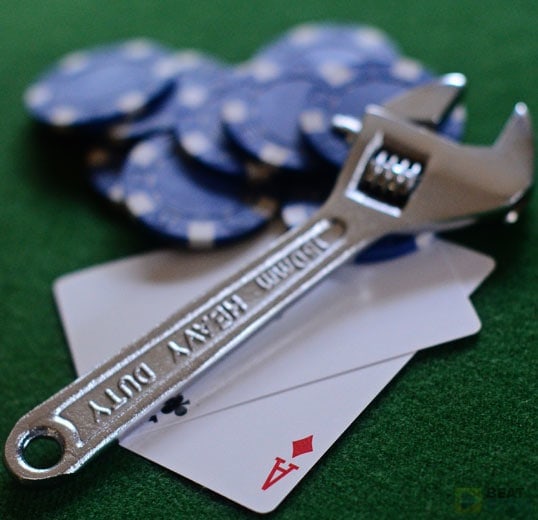
✅ Do you need to know a huge list of odds to be a winning poker player?
No, and, in fact, I recommend that beginning poker players don't waste their time memorizing odds that rarely come up. As long as you know how to calculate pot odds and the odds for the most important draws, you can still become a winning player.
✅ What are the most important odds in Texas Hold'em?
I recommend that beginners start to keep in mind the most common drawing situations: pocket pairs turning into a set and straight/flush draws. The odds are 7.5:1 for hitting a set on the flop from a pocket pair. For open-ended straights or flush draws on the flop, it's around 2:1 to hit by the river.
✅ Does position have an effect on poker odds?
While your position is incredibly important in poker strategy, where you are sat in relation to the dealer doesn't actually improve the inherent odds of a hand winning. When you are in an ideal position, you have more information to make better decisions.
✅ How do I determine the probability of winning with specific starting hands?
That's exactly what I cover in this article. But, to get you started, it's good to memorize the following: if you have an inside straight drawing to a straight, your odds of hitting by the river are 5:1. With an open-ended straight, your odds of hitting by the river are 2:1. If you have four to a flush, your odds of hitting on the river are 2:1.
✅ What is the likelihood of winning with pocket aces in Texas Hold'em?
They aren't a guaranteed win when you're dealt pocket aces, but they have about a 30% chance of winning (31.36% exactly) when playing 9-handed.
✅ What is the most common winning hand in poker?
There is yet to be a definitive answer for the most common winning hand in poker, but the general consensus seems to be that two pair is the most common winning hand, beating out competing hands 31% of the time.
More on Hold’em odds
To see, on average, how every Texas Hold’em hand plays out long-term against random opponents, check out my calculations below. This tells you a hand’s overall strength in relation to every other hand.
No Texas Hold’em probability has much context without comparing it to the odds the pot is giving you.
In no-limit poker games you should often also consider the implied odds if you feel you have a strong read on a hand.
More Hold’em odds references
- Wikipedia’s formula-based Hold’em odds
- PokerStars with a concise explanation of poker odds
- A math-based look at hand probabilities
- 888Poker Magazine with a good look at pot odds vs. outs




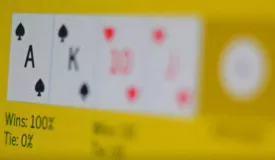





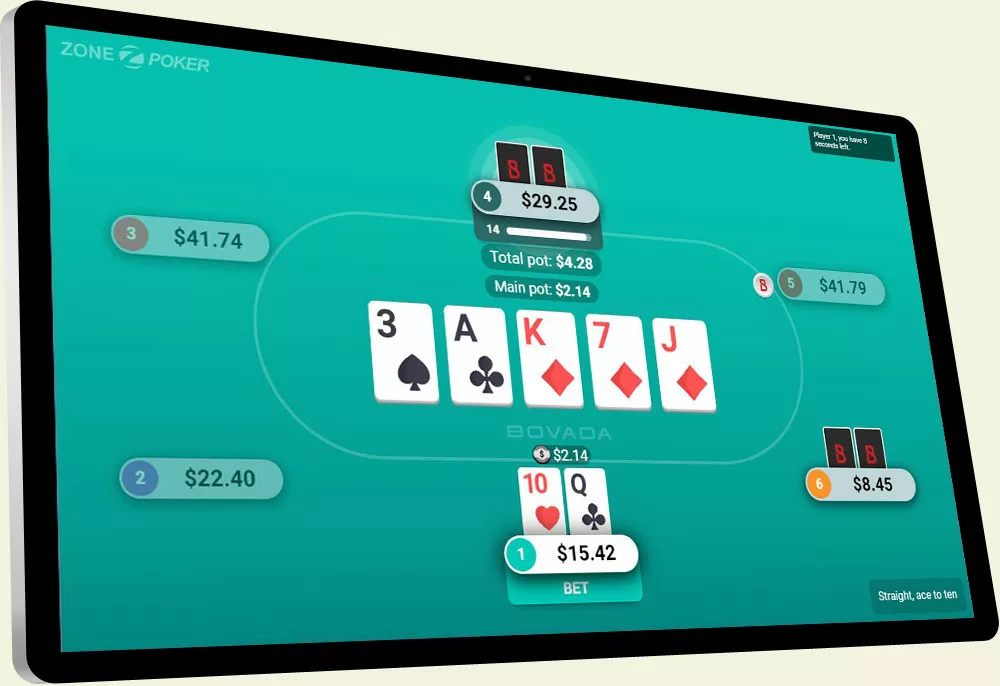
The other night I was down to my last $70 in a $1/3 game. After doubling up twice, with about $250 behind I’m in a 3-way hand with J-5 diamonds. Flop is AK10 diamonds. Turned out all three of us flopped the flush. The odds are what, .2%? Probably much less 3-handed? Anyway, I got all my chips in on the river and both called, landing me a cool $750 pot. So $70 to $750 in less than two dealer shifts. Nothing beats that feeling.
sat down at a table, was there just long enough to know it wasn’t going to be easy. Was dealt ace-jack offsuit, raised and called by the big stack, flop came ace of sp + 6-7 of diamonds, I raise and big stack shoves, I.m short chips , so I can’t fold. He turns over 4-5 of diamonds. In just the little bit that I have read, am I right that even with top pair I was ahead after the flop but behind on the odds?
Hi, Dana. Thanks for the comment and the hand scenario. This is actually a cool situation that’s one of my favorites to come up at the table.
You’re exactly right. You’re winning the hand on the flop and all your opponent has is a bunch of draws. However, he has so many of them (both an open-ended straight draw and a flush draw) that he’s actually a favorite to win the hand.
He’s about a 56% favorite to win the hand after the flop. You didn’t say if you had the Ace of diamonds, which would improve your odds slightly to make a higher flush if both the turn and river are diamonds. That would still only bring him down about 3%, though, and he would still be favored to win the hand.
You don’t see it often, but I love that straight flush draw. This example shows that you shouldn’t back down often on the flop with a straight flush draw. You’re favored over everything short of a set or full house.
The only red flag that might make you think twice about getting all your money in there would be a paired board. If they’ve already got a boat, you’re pretty much dead to rights short of those 2 outs to make the straight flush specifically.
About the set, there’s no real way to know if your opponent has it. However, even if they do, you’re still greater than a 40% favorite to win with your straight flush draw.
In the end, I wouldn’t say you really made any mistakes with the hand. You got in your money when you were ahead and he’s got to improve to beat you. It’s close to a coin flip once all the money goes in, but you got it in when you had a made hand.
This happened against me two times and both straights were made on the flop within the space of 20 hands. I thought it happening once was low odds but twice in that time I’m lost for words(kind of).
Thanks
Ha, that’s pretty brutal and unlikely for sure. It’s going to happen in about 1 out of every 76 flops for connected hands, so for it to happen twice in 20 hands is rare indeed. The beauty of poker.
Please could someone tell me the odds of flopping a straight with two hole cards that aren’t a pair?
Hi, Steven. The odds of flopping a straight would depend on your starting hand, but if they’re connected (e.g. J10 or 87) the odds are about 76-1 (1.3%).
Tonight I flopped a k high flush. Ended up getting it all in to be beaten by the nut flush which was also flopped, not drawn to. I realize I played the hand correctly but for fun I’m curious what the odds are of that happening. Thanks!
Thanks for the comment, Adam. That’s an interesting question and not an uncommon situation to happen at a table.
Admittedly I’m not the greatest at complex poker equations that involve a lot of math. I’m more of a concept/outs/odds/experience kind of guy.
I can run the software simulations for specific situations, but this one is a little tricky.
Pre-flop, the odds of 2 players at a full 9-handed both being dealt a flush that materializes on the flop are about 1 in 500-600. However, if you’re calculating once a player has a flush already there is about a 10-20% chance of another player having a flush also.
As far as specifically calculating the odds of an Ace-high flush existing when a player has a King-high flush I wouldn’t actually know how to calculate it to that level.
Maybe I’ll do some research and get back to you. Interesting question for sure.
Thanks man good info.
I flopped an ace flush but got out flopped with a running flush, what are the odds for this please
I’m sorry, but I’m not quite sure what the scenario is? You flopped an Ace-high flush, correct? That’s the highest flush possible so no one can outdraw you or have a higher flush.
Your opponent would need a full house or better to beat you. Is that what happened?
Josh
Surely you could flop 7,8,9 of hearts and with a A,2 of hearts you could still be beaten with an opponent holding 10,J of hearts (straight flush beats flush).
AD, that’s technically true, although there is such an infinitesimally small chance of that happening that I didn’t even consider it.
The odds of flopping a straight flush are anywhere from about 5,000-20,000 to 1 depending on how closely gapped your cards are. The 10-J you mentioned is the most likely starting hand to hit a straight flush at about 5,000 to 1.
It’s a fun statistic to know but, really, you’re just distracting yourself if you spend a moment considering that scenario for your opponent with an Ace-high flush. If there’s an unpaired board and you an Ace-high flush just assume you’ve got the nuts and play it hard.
You’ll probably never encounter that scenario in your poker career, but if you do, try to just tip your cap and move on.